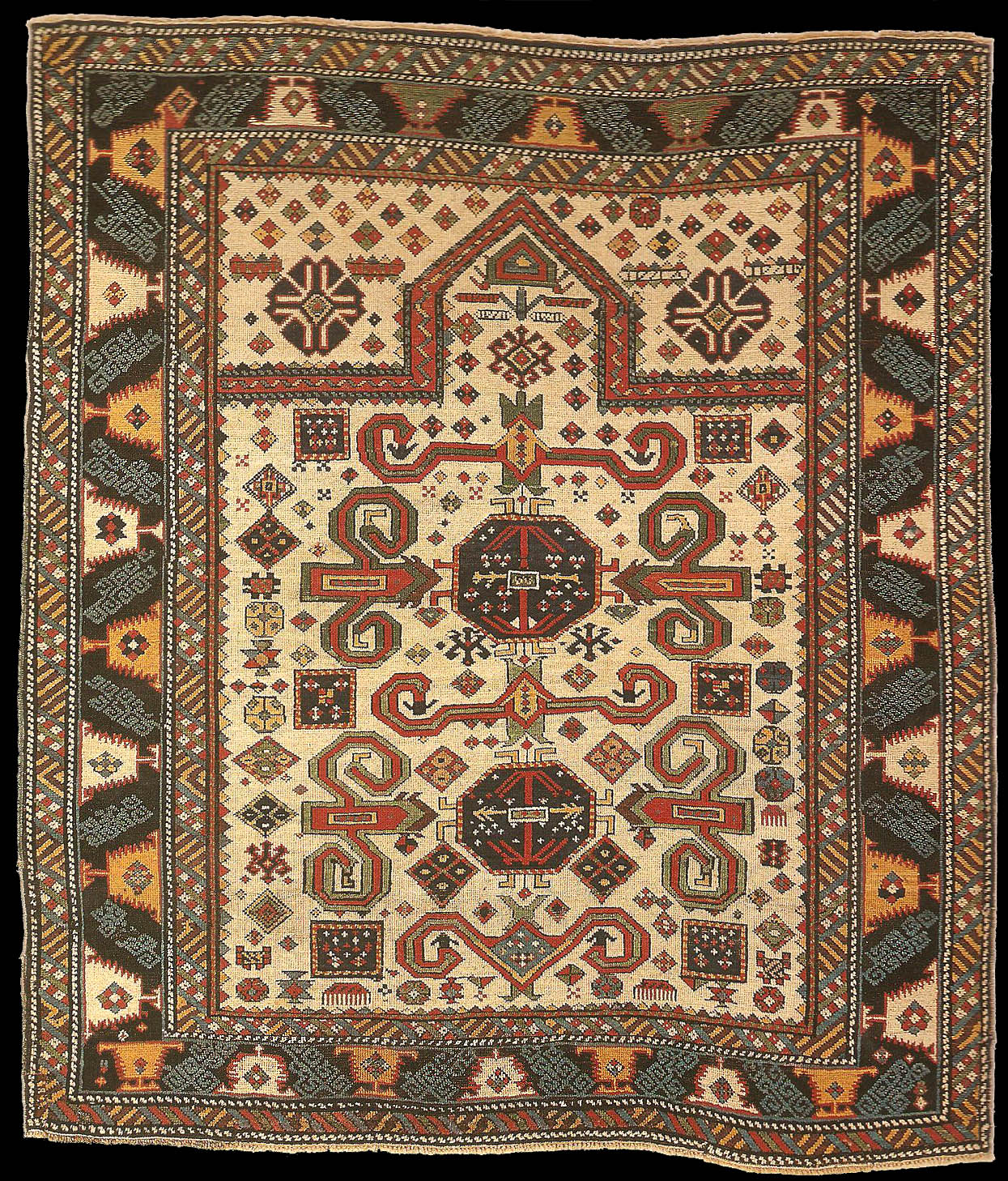|
AH 1281 (1864 AD)
dated Kuba
Perepedil prayer rug (namazlyg), Southern Hillside Kuba
Region, Devechi-Shabran District, North East
Azerbaijan.
published at Ralph Kaffel's Caucasian Prayer Rugs as plate 47.
1.22 X 1.42m (4'0" x 4'8")
|
|
Two divergent schools of thought exist on the development of the Perepedil
design. The established theory is that it is derived from traditional dragon
and animal forms, whereas a newer idea (put forward by Christine Klose)
proposes that it is linked to the floral patterns of seventeenth- and
eighteenth-century embroideries. A design anomaly present in this rug (also
in plate 37) would tend to support Klose's opinion. The "ram's horn" motif
in the lower left is "S" shaped rather than "E" shaped; such a deviation
would be unthinkable if the motif were truly meant to symbolize animal
horns. It would, however, be acceptable and logical if the weaver's intent
were to depict what Klose calls "calycinal blossoms". These different
theories, however, only serve to confirm the syllogistic nature of rug
studies, and neither enjoys full acceptance.
The older Perepedils have light grounds of white, ivory and (much more
rarely) yellow. Although reliably dated to 1864, this rug has the
spaciousness and boldness of these earlier examples. Another anomaly is that
it lacks the "animal" or "lily blossom" figures usually found in Perepedils.
Tbe border, comprising light coloured serrated "wine cups" separated by
hooked figures on a dark blue ground, is a variant on the "leaf and wine
cup" pattern.
 |

